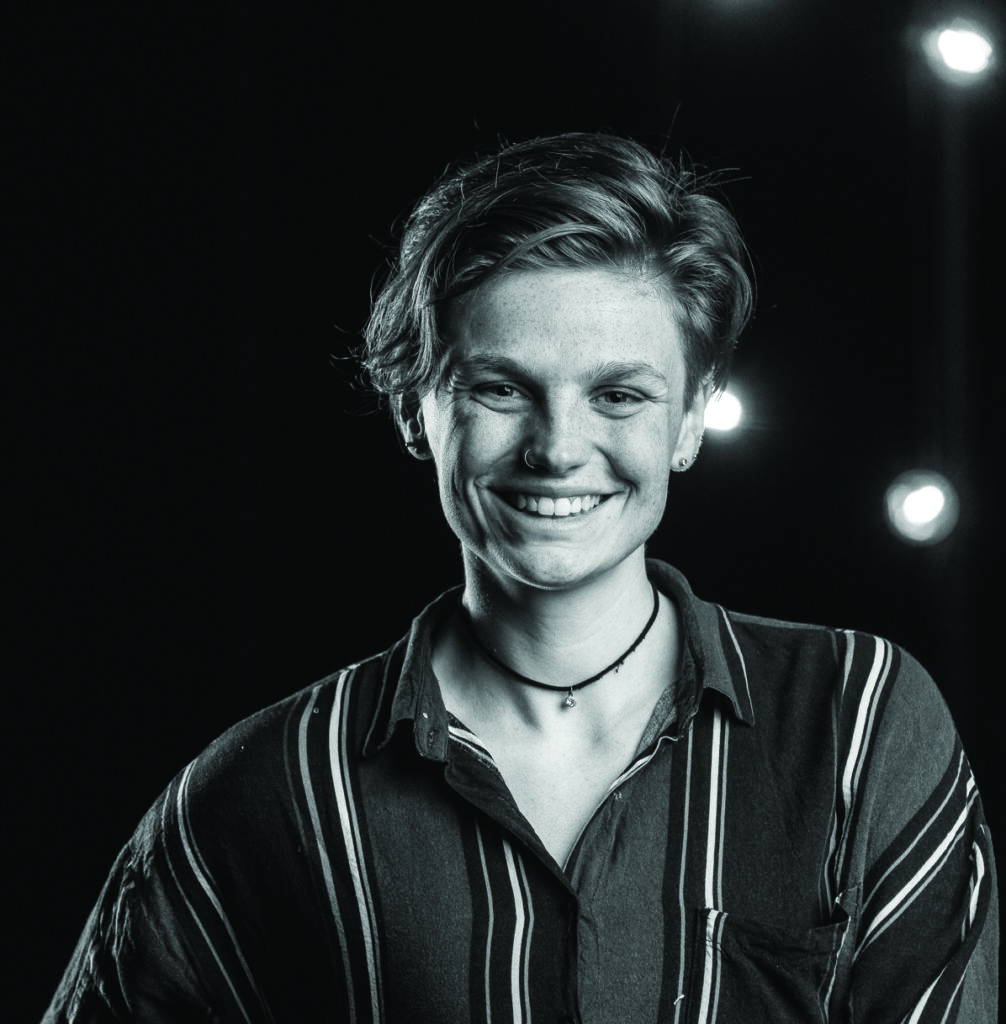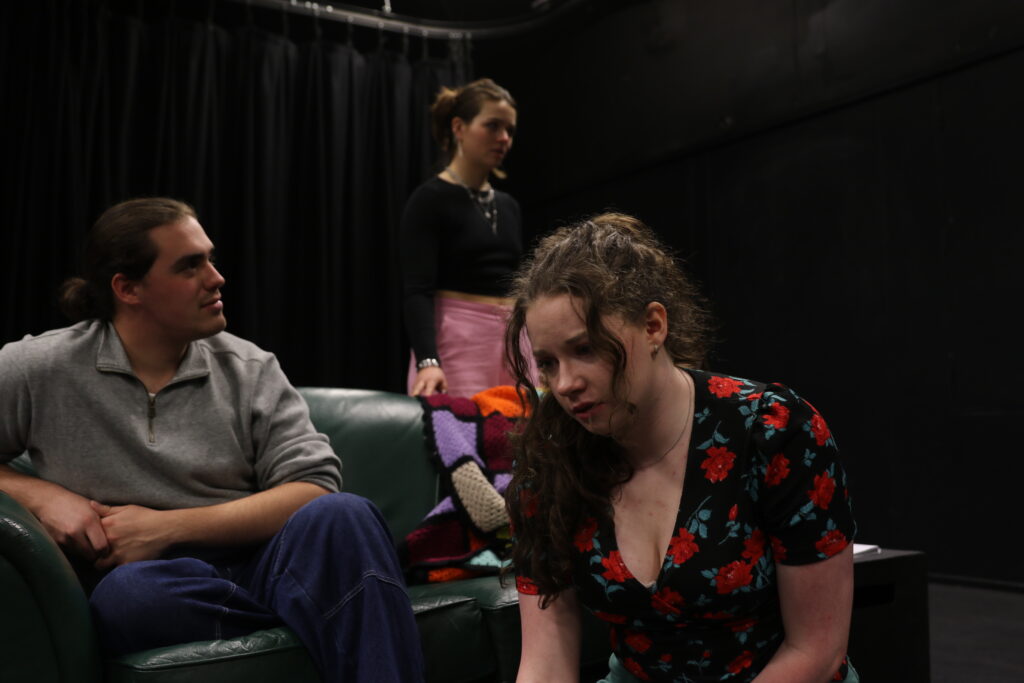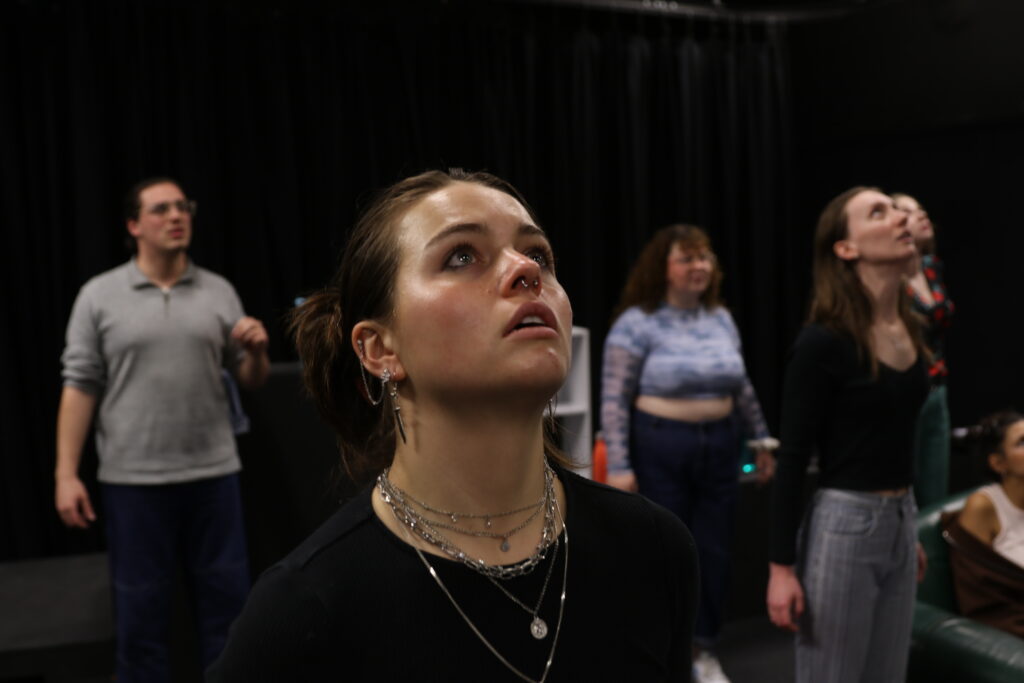Hear from Kathleen Kershaw, Set & Costume Designer for You Can’t Tell Anyone.
8 Aug 2023

We sat down with the Costume & Set Designer of You Can’t Tell Anyone, Kathleen Kershaw, to gain an insight into her life, creative process and approach to the second show in our season!
Kathleen! Tell us about yourself and your journey, and the worst party game you’ve ever played!
I got into set and costume design through a lifelong tangential interest in sewing and in theatre, though it took me a shockingly long time to realise that the two could go together, and even be a career.
Between year 12 and starting NIDA, in my 3 year gap year, I travelled a lot and spent time volunteering on farms. This year I finally have a backyard again and am working on building up a little veggie garden.
Personally I hate any game where I have to ask people questions. Never have I ever, Truth or Dare, Paranoia, I like none of those games. (Naturally a perfect fit for this show!)
What was your creative process like in bringing the story and characters to life visually? How did you approach translating the themes and emotions of the script into your design choices?
A lot of choices in the design are based around the intent to create an atmosphere that can shift from a comforting, homely environment to something quite threatening.
For me, the creative process always begins with a combination of conversation and visual research. The two elements bounce off each other, the visual images that I find becoming a prompt for conversation between Caitlin and I, while the ideas that come up in those conversations become the backbone of how I approach the text and the design. Some of those ideas may be fairly abstract, such as discussing how we create a sense of confinement and entrapment, while others will be much more practical, for example thinking about where characters enter and exit from and what furniture Caitlin felt was necessary for the action.
The rest of the process is really about finding a balance between those two requirements as I work through sketches, draft models, a final model and technical drawings. It is always about finding a solution that serves the ideas and atmospheric needs of the play and is also functional in a practical sense and supports the actors.
The play explores the transition from adolescence to adulthood and the loss of meaning and identity that comes with it. How did you incorporate these themes into your set and costume designs to enhance the storytelling and evoke the desired emotions?

Given the closed space and time that the play operates in none of the characters have the opportunity to really travel through that transition visually over time, instead it became much more about the dichotomy of youth and adulthood expressed in the juxtaposition of the parents’ space and the teens that occupy it. The adult in this case is specifically Mr. Michaels who, in his absence, has a great impact on the events of the play.
The set is designed very much to reflect a sense of Mr. Michaels and is mature, sedate, lived in and very respectable. I drew a lot on wood tones and rich darker colours to build that environment. It is all also a bit dated.
The teens on other hand are far more reflected in their costuming and the props that they bring into the space, they are brighter, youthful, contemporary and much more transitory. They are trying to make their mark and decide on the way that they will define themselves, however all it would take to remove their influence on the space is an hour or so of tidying up. I hope that dynamic between the two can enhance the precariousness of the moment that the teens are having to navigate.
Can you share any specific challenges or unique considerations you’ve faced while designing the sets and costumes for the production? How did you overcome those challenges and ensure that your designs effectively served the narrative and characters?
Working with material that is too close to home can in a strange way be a big challenge. With You Can’t Tell Anyone, it is set very much in the present moment, and from the very beginning we had very strong reference points from within Canberra that helped us define how the space should feel. It can be easy to fall into the trap of thinking that you know what you’re dealing with in that situation, and falling down on visual research. It can equally be very hard to find existing images that have a sense of reality to them.
I’ve found that I need to do a lot more in person research by paying close attention to my surroundings in everyday life and doing a LOT of people watching. For costume, spending time sitting around civic on a friday night or in the food court of the mall on a saturday afternoon was one of the most helpful things I did to keep my mind open.
I would also ask myself a lot whether a decision I was making was one that would read well to a broader audience or whether it was something from my own life that may not translate.

Set and costume design have the power to enhance the atmosphere and evoke emotions. Can you describe how you’ve used your designs to create a specific mood or reinforce the themes and character dynamics in You Can’t Tell Anyone?
So much of the design process for You Can’t Tell Anyone has been about enhancing the mood. Early in the process I was pushing towards a design that was far more abstract than what it has become in an effort to really build and prey on the paranoia and entrapment that the characters begin to feel. One thing that has really excited me about the work is finding a balance in the sense of the supernatural that gives legitimacy to the teens’ fear that there is definitely something weird going on while also keeping a light enough touch that everything they’re experiencing could be of their own fabrication. To that end I began to find that having a set that was too abstract or too threatening did a disservice to the play as it didn’t allow for a natural growth of tension between the characters and the space.
I realised that there needed to be a breakdown of a comfortable, familiar space, in a way that echoed the breakdown of these well worn childhood friendships. To do that we start with the image of a sitting room that is neat and tidy, well lived in and homely. The breakdown of the space is then led by the characters as they rearrange it to suit their needs and growing anxieties. Underscoring that breakdown is a fundamental misalignment of the space and the sense that beyond this one room and puddle of light there is nothing but darkness, and to step out of that space would be the same as stepping off a jagged ledge.
You Can’t Tell Anyone will open at Canberra Theatre Centre in The Courtyard Studio on August 10, running until August 20. Don’t miss out, buy a ticket now through our website!
